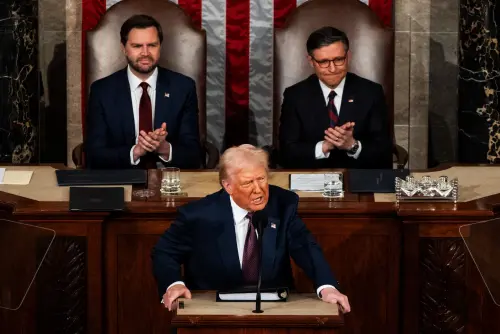The topic of immigration reform recently returned to the spotlight when President Barack Obama met with Senators Chuck Schumer (D-N.Y.) and Lindsay Graham (R-S.C.) to discuss a framework for addressing the issue. While it remains to be seen how fast Congress and the White House will move on the issue in an election year, this is certainly encouraging news. Still, it is clear that there is widespread frustration with the existing national legislation since a large number of states and local governments are adopting specific measures toward immigrants. It also points to the need for reform sooner rather than later. Indeed, some legislation has been considered in the last years, and some interesting proposals have been advanced already, like the Brookings Duke Roundtable.
Currently, illegal immigrants pay a significant amount of money to smugglers for taking them across the border, incurring in huge risks to enter the United States. At the very least, new legislation should allow these immigrants to pay the U.S. government instead for the right to come and work. These funds could then be used to compensate the costs of immigration on legal U.S. residents.
Any reform proposal on the table must not only address the situation of undocumented immigrants currently in the U.S., but also limit future undocumented flows. Regardless of how the U.S. decides to deal with its current stock of undocumented workers, the problem will continue to arise unless the reform legislation redesigns the legal immigration system.
The current visa system has failed to provide enough flexibility to match immigrant flows to the demands of the domestic labor market. The question is how to design a legal immigration system that reduces incentives for potential migrants to enter the United States illegally and for American employers to hire undocumented immigrants, without eliminating the benefits of immigration.
The first answer that comes to mind is strengthening enforcement at the border and in the workplace, thus reducing border crossings and discouraging demand for undocumented immigrants. This certainly has some merits and should be part of any reform. However, it will hardly solve the problem completely. Enforcement at the border has increased substantially in the last years, but it has not stopped illegal flows. If anything, the recession has probably been more effective in that regard since there have been fewer jobs in the U.S., even for undocumented workers.
The fact that the U.S. recession has reduced the flow of illegal immigrants is a variable worth further analysis. If illegal flows respond to economic conditions, because of its effects on the demand for workers, one effective way to reduce these flows is to create a legal immigration system that adapts and responds to changes in the demand for workers. For example, creating a body such as a Commission for Immigration with the ability to revise the number of available visas based on labor demand is a move in that direction. This also has the advantage of separating the longer-term task of defining the general framework for immigration reform from the medium-term management of the visa system. Creating a Commission for Immigration that would revise the number of available visas does not entail real time updates and a continuous adjustment on the number of visas, but instead a mechanism to enhance the ability to accommodate changing realities, both in the U.S. and sending countries.
Temporary visas are another tool that can be used to give flexibility and can be an attractive way to bring in workers when they are needed. These visas, alone or combined with the above mentioned commission, can provide the United States with an adequate tool to adjust the inflows to labor market conditions. Immigrants on these temporary visas should be allowed to reapply in subsequent years, thus reducing the incentives to overstay. The United States government also needs to improve its control system in order to guarantee that the terms of the stay are respected.
Visa programs for temporary workers are not new to the U.S.; they currently exist and have existed in the past in agreements such as the Bracero program. Lessons learned from previous and current experiences should be applied to improve future program design, also the U.S. can learn from experiences in other countries with similar programs (see, for example “The Globalization of Household Production,” by Kremer and Watt). Some may argue that temporary worker programs without a clear path to permanent residency or citizenship is an unattractive or unappealing solution. While this argument has some merits, it is hard to believe that having temporary and legal status is worse than being undocumented.
Any reform of the visa system must also address the type of immigrants that are knocking on the U.S.’s doors. While work visas for high-skilled workers are often mentioned and are certainly reasonable and justifiable, existing undocumented immigrants are highly concentrated in the construction, agriculture and services sector (see, for example, Table 1). Ignoring the demand from these sectors in a new immigration proposal would severely limit its effectiveness.
##1##
If the United States wants to attract the workers that it needs and when it needs them, then it must provide them and their potential employers with enough legal options. With the diverse needs that emerge in a country like the United States, temporary visas are a viable option that should be considered in any immigration reform. The legalization of the current stock of unauthorized immigrants is important, but it will not solve the immigration debate. Failure to design a comprehensive immigration reform will just postpone the debate for a few more years.
Finally, sending countries must also be partners in this effort. Latin American citizens, particularly Mexicans, are moving to the U.S. in search of better living conditions for their families. Governments of sending countries should collaborate with the U.S. in controlling illegal flows in exchange for an immigration system that their citizens the chance to migrate legally. This benefits both sending countries and the United States. Compromise and cooperation across the U.S. southern border might prove to be decisive, but a temporary worker program might convince Latin American governments to cooperate with the administration on legal immigration and the control of illegal flows. A restrictive and ill-designed U.S. immigration system is not only bad news for the U.S., but for sending countries too. Indeed, some legislation has been considered in the last years, and some interesting proposals have been advanced already, like the Brookings Duke Roundtable.
The Brookings Institution is committed to quality, independence, and impact.
We are supported by a diverse array of funders. In line with our values and policies, each Brookings publication represents the sole views of its author(s).


Commentary
Op-edImmigration Reform: Redesigning the Legal System and Utilizing Temporary Visas
April 15, 2010